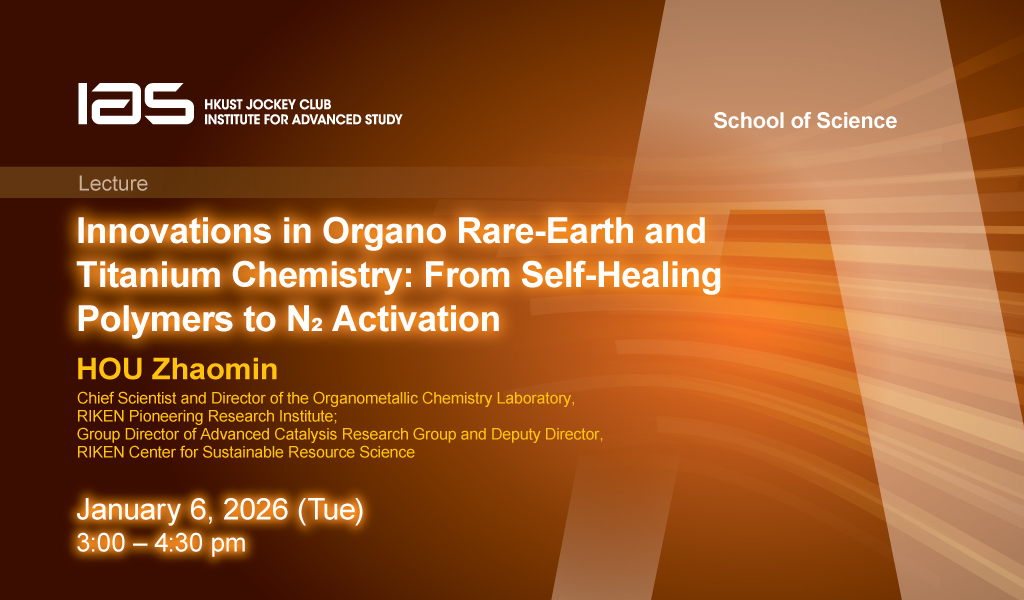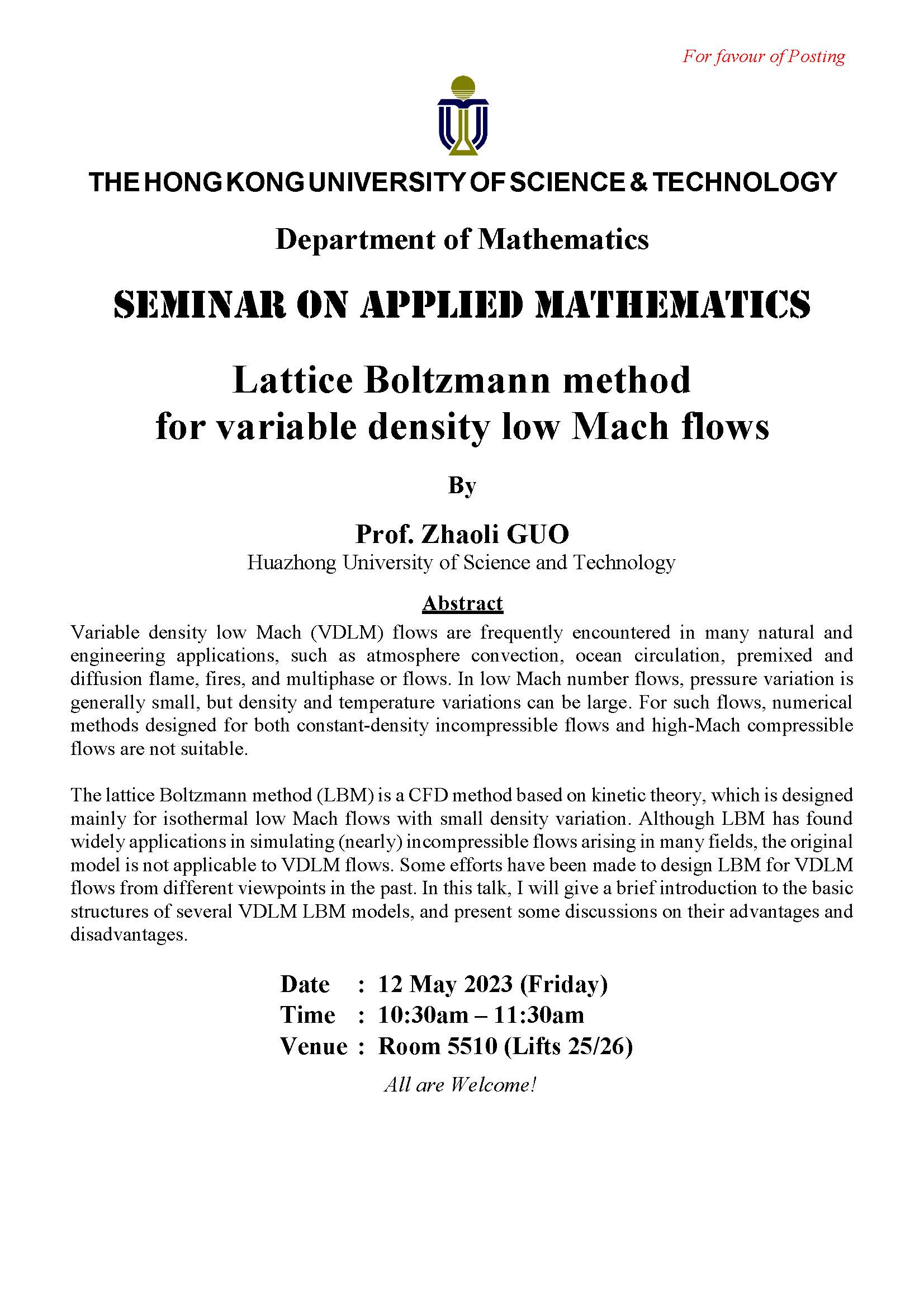Variable density low Mach (VDLM) flows are frequently encountered in many natural and engineering applications, such as atmosphere convection, ocean circulation, premixed and diffusion flame, fires, and multiphase or flows. In low Mach number flows, pressure variation is generally small, but density and temperature variations can be large. For such flows, numerical methods designed for both constant-density incompressible flows and high-Mach compressible flows are not suitable.
The lattice Boltzmann method (LBM) is a CFD method based on kinetic theory, which is designed mainly for isothermal low Mach flows with small density variation. Although LBM has found widely applications in simulating (nearly) incompressible flows arising in many fields, the original model is not applicable to VDLM flows. Some efforts have been made to design LBM for VDLM flows from different viewpoints in the past. In this talk, I will give a brief introduction to the basic structures of several VDLM LBM models, and present some discussions on their advantages and disadvantages.

Huazhong University of Science and Technology



